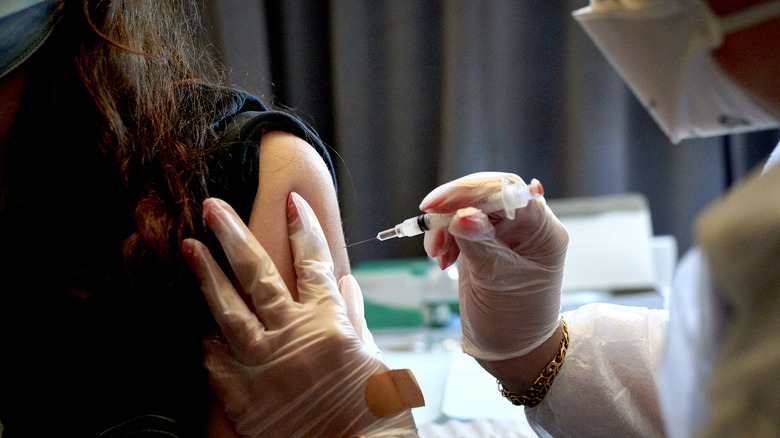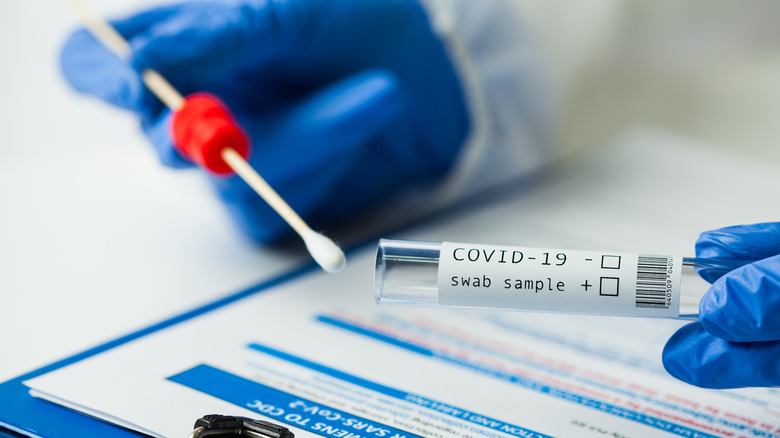The Real Reason We're Not Getting Closer To Herd Immunity
The Biden administration had much to celebrate when, after 100 days in office, they could say that almost 100 million Americans are fully vaccinated, and that coronavirus infections are at their lowest levels since October 2020, (via NPR). But, in spite of all this good news, no one is able to say whether the war against COVID-19 is actually going to be won by achieving herd immunity, particularly since the daily vaccination rates have started to retreat.
It appears public health experts say that the best we can all hope for, is that the virus will be less deadly, and it becomes something we all have to live with. The reason: the elusive goal of herd immunity is looking difficult to attain at all. Evolutionary Biologist Rustom Antia, who works at Atlanta's Emory University, is one of those who believes that "the virus is unlikely to go away. But we want to do all we can to check that it's likely to become a mild infection," (via The New York Times).
Pandemic expert Dr. Anthony Fauci has asked for a change in the way the words "herd immunity."
"People were getting confused and thinking you're never going to get the infections down until you reach this mystical level of herd immunity, whatever that number is," he explained. "That's why we stopped using herd immunity in the classic sense. I'm saying: Forget that for a second. You vaccinate enough people, the infections are going to go down."
The goal posts for herd immunity have changed
Public health experts had originally thought that herd immunity could be reached if 60% to 70% of the population had received their vaccines. However, this changed because doctors had based their assumptions on the original form of the virus.
In reality, the coronavirus has mutated – and it is expected to be at least 60% more contagious than the original. In order for herd immunity to be reached, at least 80% of the population would now have to be vaccinated — and with the country's firm anti-vaxxers seen at about 30% of the population, it will be difficult to get to the percentage where herd immunity can be achieved. Doctors haven't even begun to consider what would happen if the virus continues to mutate to become even more contagious, or whether immunized people can get other people sick with the virus, (via The New York Times).
Still, public health experts haven't stopped trying to combat the spread of COVID-19. As the Australia Broadcasting Corporation (ABC) News reports, the World Health Organization (WHO) now admits that the virus is primarily airborne and transmitted via infected droplets. They are calling on governments to fight the pandemic by cutting the risk of airborne transmissions. It may be a bit late for some, but others still see this as a shift in the right direction for WHO, whose guidance is important to getting COVID-19 under control.

